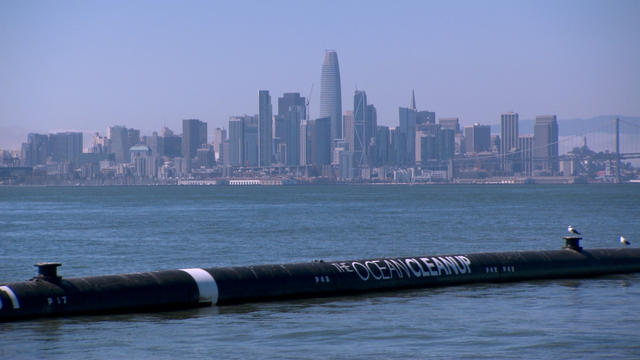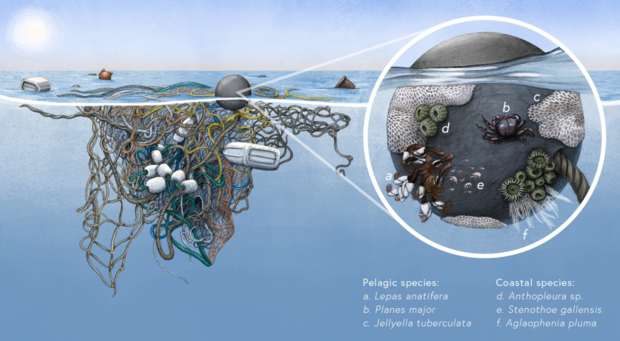▶ Watch Video: A new design to clean up the Great Pacific Garbage Patch
The North Pacific Subtropical Gyre, otherwise known as the “Great Pacific Garbage Patch,” is considered the world’s largest accumulation of ocean plastic. It’s so massive, in fact, that researchers found it has been colonized by species — hundreds of miles away from their natural home.
The research, published in the journal Nature on Thursday, found that species usually confined to coastal areas — including crabs, mussels and barnacles — have latched onto, and unexpectedly survived on, massive patches of ocean plastic.
Coastal species such as these were once thought incapable of surviving on the high seas for long periods of time. Only oceanic neuston, organisms that float or swim just below the ocean surface, have historically been found near these patches, as they thrive in open ocean.
But the mingling of the neuston and coastal species is “likely recent,” researchers said, and was caused largely because of the accumulation of “long-lived plastic rafts” that have been growing since the middle of the 20th century.
Just by itself, the Great Pacific Garbage Patch, located between California and Hawai’i, is estimated to have at least 79,000 tons of plastic within a 1.6 million-square-kilometer area, according to research published in 2018. There are at least four other similar patches throughout the world’s oceans. And the accumulation of ocean plastic is only anticipated to get worse.
Researchers expect that plastic waste is going to “exponentially increase,” and by 2050, there will be 25,000 million metric tons of plastic waste.
This new community, researchers said, “presents a paradigm shift” in the understanding of marine biogeography.
“The open ocean has long been considered a physical and biological barrier for dispersal of most coastal marine species, creating geographic boundaries and limiting distributions,” researchers said. “This situation no longer appears to be the case, as suitable habitat now exists in the open ocean and coastal organisms can both survive at sea for years and reproduce, leading to self-sustaining coastal communities on the high seas.”
For lead author Linsey Haram, the research shows that physical harm to larger marine species should not be the only concern when it comes to pollution and plastic waste.
“The issues of plastic go beyond just ingestion and entanglement,” Haram said in a statement. “It’s creating opportunities for coastal species’ biogeography to greatly expand beyond what we previously thought was possible.”
But that expansion could come at a cost.
“Coastal species are directly competing with these oceanic rafters,” Haram said. “They’re competing for space. They’re competing for resources. And those interactions are very poorly understood.”
There is also a possibility that expansions of these plastic communities could cause problems with invasive species. A lot of plastic found in the Great Pacific Garbage Patch, for example, is debris from the 2011 Tohoku tsunami in Japan, which carried organisms from Japan to North America. Over time, researchers believe, these communities could act as reservoirs that will provide opportunities for coastal species to invade new ecosystems.
There are still many questions researchers say need to be answered about these new plastic-living communities — like how common they are and if they can exist outside the Great Pacific Garbage Patch — but the discovery could change ocean ecosystems on a global scale, especially as climate change exacerbates the situation.
“Greater frequency and amounts of plastics on land, coupled with climate change-induced increases in coastal storm frequency ejecting more plastics into the ocean, will provide both more rafting material and coastal species inoculations, increasing the prevalence of the neopelagic community,” researchers said. “As a result, rafting events that were rare in the past could alter ocean ecosystems and change invasion dynamics on a global scale, furthering the urgent need to address the diverse and growing effects of plastic pollution on land and sea.”



































